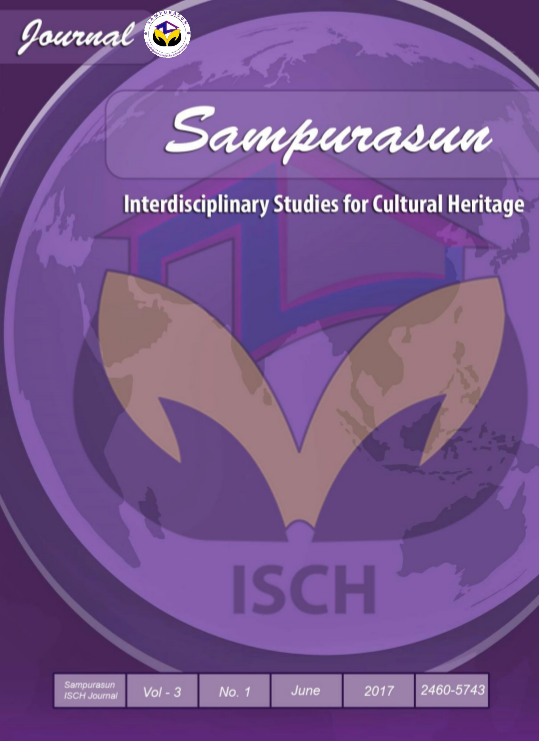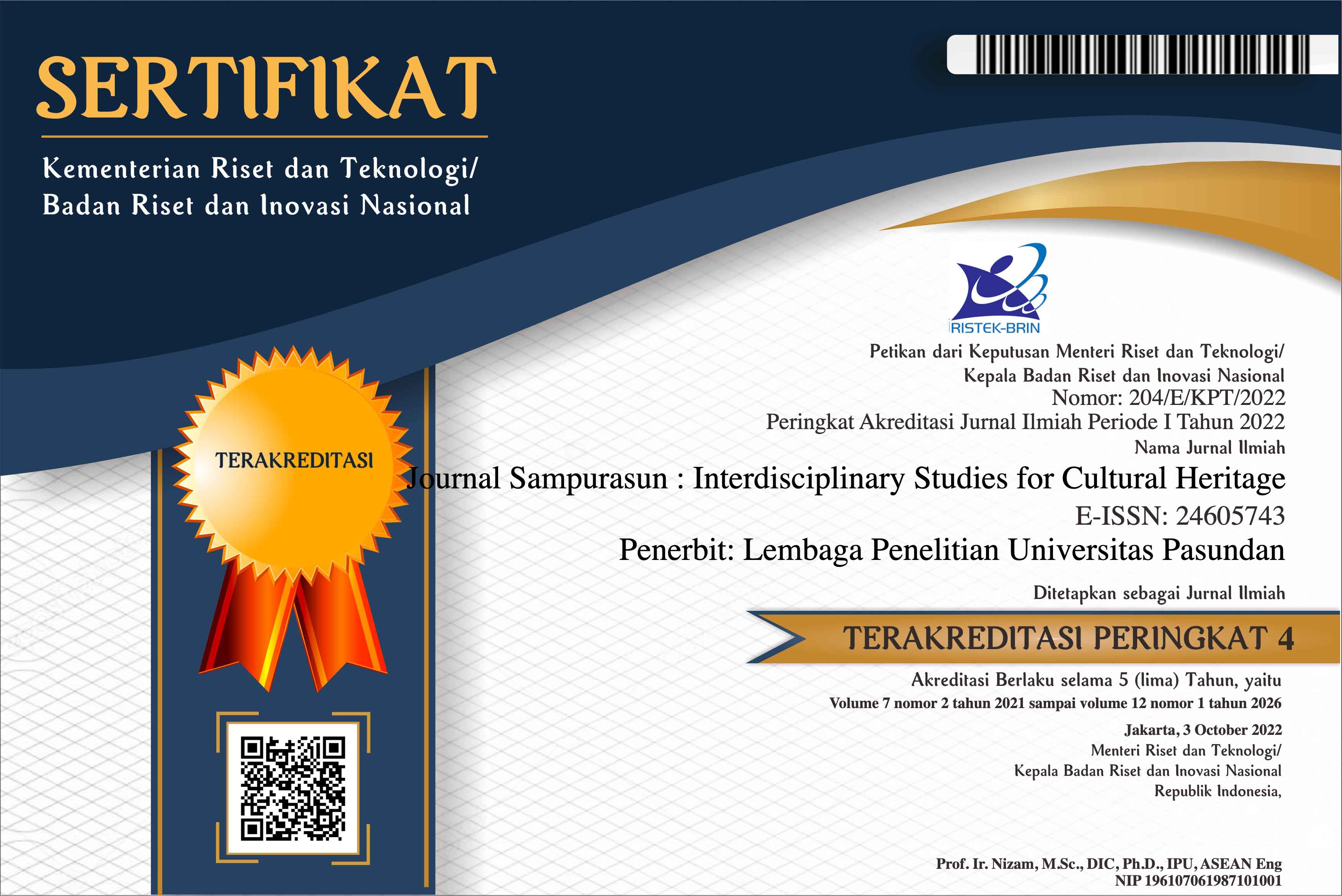TRANSPLANTING MEDIATION INTO INDONESIAN CIVIL JUDICIAL SYSTEM
DOI:
https://doi.org/10.23969/sampurasun.v3i1.265Keywords:
Keywords: Transplantation, mediation, civil judicial system, Indonesia.Abstract
Mediation which has been integrated to court since 2003, was the result of transplantation from the United States of America with a low rate of success. If it is evaluated with the law of the non-transferable law by Robert B. Seidman, the rule of law derived from a country which is formed based on its socio-cultural condition cannot be automatically applied to a certain group of people living with a different socio-cultural awareness. The objective of the research is to find a suitable mediation concept to be applied in civil case litigation and to find out factors influencing the less-successful court connected mediation in Indonesia. This is a qualitative research using socio legal approach. Primary data obtained through interviews, secondary data obtained through document review. Based on qualitative analysis, it is found out that the suitable mediation concept applied in civil case litigation was repositioned as one of requirements to file a suit. Factors influencing less-successful court connected mediation in Indonesia are law and legislation, law enforcement officers, facilities and infrastructure, society and culture.
Downloads
References
Adi Sulistiyono, 2006, Mengembangkan Pradigma Non-Litigasi di Indonesia, Surakarta, UNS Pres,
Bὂhmelt, Tobias, 2011, International Mediation Interaction Synergy, Conflict, Effectiveness, Germany: VS Research.
Bush, Robert A. Baruch dan Folger, Joseph P., 2005, The Promise of Mediation, The Transformative Approach to Conflict, San Francisco: Jossey-Bas.
Cane Peter dan Kritzer, Herbert M., Ed., 2010, The Oxford Handbook of Empirical Legal Research, New York: Oxford University Press.
Christopher W. Moore, 2014, The Mediation Process : Practical Strategies for ResolvingConflict, San Fransisco : Jossey Bass Publisher.
Esin Orucu, 2010, “Critical Comparative Law, Considering Paradoxes for Legal System in Transition”, EJCL, Vol.4.1., June, 2000, http://www.ejcl.com, 23rd March.
Laurence Boulle, 1996Mediation Principles, Process, Practice, Adelaide, Butterworths.
Susanti Adi Nugroho, 2009, Mediasi Sebagai Alternatif Penyelesaian Sengketa, Telaga Ilmu Indonesia, Jakarta.
Suzanne McCorkle dan Melanie J. Reese, 2005, Mediation Theory and Practice, Pearson Education, USA.
Stephen B. Goldberg, ed., 2003. Dispute Resolution, Negotiation, Mediation, and Other Process, Aspen Publishing, New York.
Steven Vago, 2011, Law and Society, 10th Edition, New Jersey, Prentice Hall.
Acts Number 30/1999 regarding Arbitration and Alternative Dispute Resolution.
Acts Number 4/2004 regarding The Power of Judges
Supreme Court Rules Number 1/2016 regarding Court Mediation
Downloads
Published
Issue
Section
License
Copyright Notice
Authors should not withdraw their submitted papers because the withdrawal wastes voluntary works devoted by an associate editor and reviewers. But, we accept the withdrawal of a submitted paper if authors have unavoidable reasons. In the event that a manuscript is to be withdrawn from submission to Sampurasun Journal, a letter must be sent to the editorial office requesting withdrawal by e-mail (sampurasunjournal@unpas.ac.id) with its scanned PDF file, before the notification of acceptance for publication.
The withdraw request letter must include the following information. Paper ID, Paper title, Authors names, Reason why the paper must be withdrawn, and Date and signatures of all the authors (or signature of the contact author).
If only the contact author signs the letter, he/she must obtain the agreement of the withdrawal from all the other authors and the letter must include the description that all the other authors agreed the withdrawal. The journal will not withdraw a manuscript from peer review until such a letter has been received. Authors must not assume their manuscript has been withdrawn until they have received appropriate notification from the editorial office. Withdrawal of a manuscript subsequent to acceptance for publication will only be granted in the most exceptional of circumstances.
After the paper is accepted for publication, the withdrawal is not permitted in principle. The authors must always pay the charge even if the withdrawal is permitted. Any request of withdrawal that does not follow the above procedure is treated as invalid. If illegal submission, e.g., plagiarized or duplicate submission, is found for a paper, the withdrawal of the paper will never be permitted and the authors will be punished based on the rule. It is not acceptable practice to withdraw a manuscript in the event of acceptance at another journal. This constitutes dual submission. The editorial office of the other journal will be notified of your actions. In such circumstances Sampurasun ISCH may chose to impose appropriate punitive action subject.
Withdrawal Penalty
Author is not allowed to withdraw submitted manuscripts, because the withdrawal is waste of valuable resources that editors and referees spent a great deal of time processing submitted manuscript, money and works invested by the publisher. If author still requests withdrawal of his/her manuscript when the manuscript is still in the peer-reviewing process, author will be punished with paying $200 per manuscript, as withdrawal penalty to the publisher. However, it is unethical to withdraw a submitted manuscript from one journal if accepted by another journal. The withdrawal of manuscript after the manuscript is accepted for publication, author will be punished by paying US$500 per manuscript. Withdrawal of manuscript is only allowed after withdrawal penalty has been fully paid to the Publisher. If author don't agree to pay the penalty, the author and his/her affiliation will be blacklisted for publication in this journal. Even, his/her previously published articles will be removed from our online system.


















